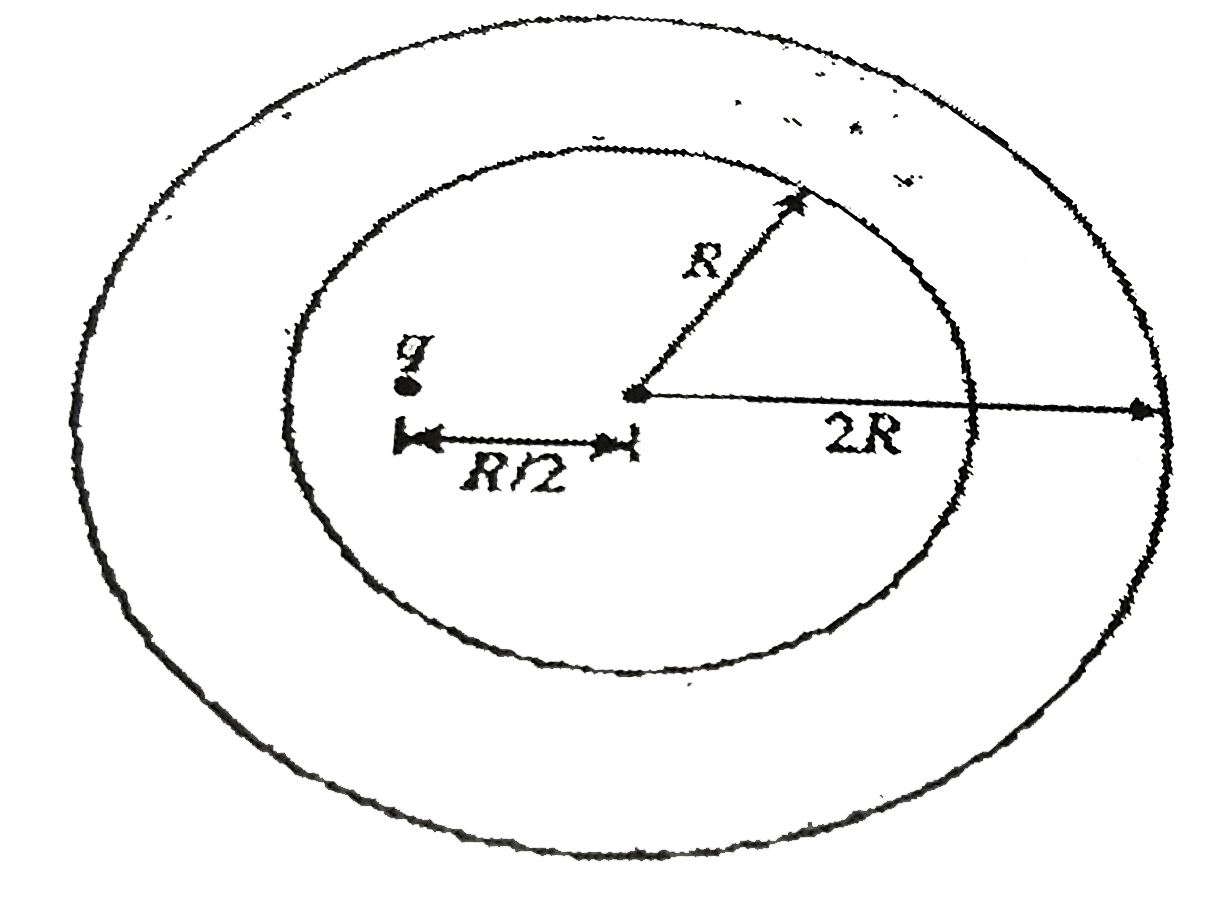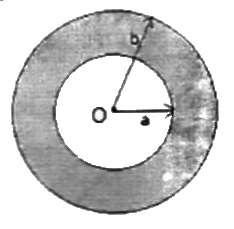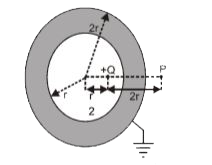Figure shows a cross-section ofa spherical metal shell of inner radius R and out radius ZR. A point charge q is ·located at a distanceR/2 from the centre of the shell. If the shell is electrically neutral, then which of the following statements is/are correct : 
The electric field at some point inside shell is zero
The electric field at all the point inside shell is non-zero
The electric field at the outer surface of the shell is E14πε
q(3R/2)2
The electrical field at the outer surface is E =14πεo
=q(2R)2
Step by step video & image solution for Figure shows a cross-section ofa spherical metal shell of inner radius R and out radius ZR. A point charge q is ·located at a distanceR/2 from the centre of the shell. If the shell is electrically neutral, then which of the following statements is/are correct : by Physics experts to help you in doubts & scoring excellent marks in Class 12 exams.
Topper's Solved these Questions
- BOOK - PHYSICS GALAXY - ASHISH ARORACHAPTER - ELECTROSTATICSEXERCISE - Unsolved Numberical Problems73videos
ELECTROSTATICS
- BOOK - PHYSICS GALAXY - ASHISH ARORACHAPTER - ELECTROSTATICSEXERCISE - Numerical MCQs Single options Correct64videos
ELECTROSTATICS
- BOOK - PHYSICS GALAXY - ASHISH ARORACHAPTER - ELECTROMAGNETIC INDUCTION AND ALTERNATING CURRENTEXERCISE - Advance MCQs33videos
ELECTROMAGNETIC INDUCTION AND ALTERNATING CURRENT
- BOOK - PHYSICS GALAXY - ASHISH ARORACHAPTER - GEOMETRICAL OPTICSEXERCISE - Unsolved Numerical Problems107videos
GEOMETRICAL OPTICS
Similar Questions
Figure shows a point charge +Q, located at a distance R/2 from the centre of a spherical metal shell. Draw the electric field lines for the given system.
 View Solution
View SolutionA point charge Q is placed inside a conducting spherical shell of inner radius 3R and outer radius 5R at a distance R from the centre of the shell. The electric potential at the centre of the shell will be
View Solution
Knowledge Check
- Question 1 - Select One
A point charge q is placed inside a conducting spherical shell of inner radius 2R and outer radius 3R at a distance of R from the center of the shell. Find the electric potential at the center of the shell.
A14πε0q2RB14πε04q3RC14πε05q6RD14πε02q3R - Question 2 - Select One
A charge +q is placed somewhere inside the cavity of a thick conducting spherical shell of inner radius R1 and outer radius R2. A charge – Q is placed at a distance r>R2 from the centre of the shell. Then the electric field in the hollow cavity-
Adepends on both +q and – QBis zeroCis only that due to -QDis only that due to +q - Question 3 - Select One
A point charge q is placed inside a conducting spherical shell of inner radius 2R and outer radius 3R at a distance of R fro the centre of the shell. The electric potential at the centre of shell will (potential at infinity is zero).
A14πε0q2RB14πε04q3RC14πε05q6RD14πε02q3R
A point charge +q is placed at the centre of a conducting spherical shell of inner radius a and outer radius b. Find the charge appearing on the inner and outer surface of the shell.
View SolutionA metallic spherical shell has an inner radius R1 and outer radius R2. A charge is placed at the centre of the spherical cavity. The surface charge density on the inner surface is
 View Solution
View SolutionA spherical conducting shell of inner radius r1 and outer radius r2 has a charge Q.
(a) A charge q is placed at the centre of the shell. What is the surface charge density on the inner and outer surfaces of the shell ?View SolutionA conducting spherical shell having inner radius a and outer radius b carries a net charge Q. If a point charge q is placed at the centre of this shell, then the surface charge density on the outer surface of the shell is given as:
View SolutionConsider an initially neutral hollow conducting spherical shell with inner radius r and outer radius 2r. A point charge +Q is now placed inside the shell at a distance r/2 from the centre. The shell is then grounded by connecting the outer surface to the earth. P is an external point at a distance 2r from the point charge +Q on the line passing through the centre and the point charge +Q as shown in the figure.

The magnitude of the force on a test charge +q placed at P will beView Solution

